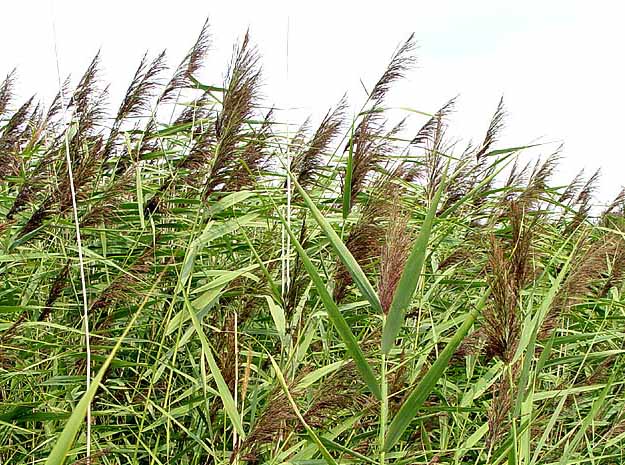
Chorapullu ചൂരപുല്ലു
Genus: Phragmites
Botanical name: Phragmites karka
PLANT NAME IN DIFFERENT LANGUAGES
Sanskrit: Dhamana, Nala
Hindi: Narkul, Nal, Doka-ghas, Kilak
English: Tall Reed, Water reed, Common reed
Malayalam: Chora pullu, Vezhamkole
MEDICINAL PROPERTIES
Chora pullu is a perennial reed, with creeping rhizomes. Culms are erect, up to 10 m tall. Leaf-blades are 30-80 cm long and 1.2-4 cm wide, hairless, rough to touch beneath, the tips flat and stiff (occasionally almost smooth or with thread-like tips). Flowers are borne in panicles 30-50 cm long, 10-20 cm wide, the lowest node often many-branched in a whorl, brownish purple. Rhachilla, long, silky hairy above the lowest lemma. The branches bare of spikelets for some distance from their base. Spikelets are 9-12 mm long, the rhachilla-hairs 4-7 mm long, rather sparse; lower glume just over half as long as the upper; upper glume narrowly elliptic to very narrowly elliptic, 4-6 mm long, acute to subacute; lowest lemma very narrowly elliptic, 7.5-12 mm long; fertile lemmas very narrowly lanceolate, 85-11 mm long.
The plant is cooling and aphrodisiac; useful in biliousness, urinary troubles, vaginal and uterine complaints, erysipelas, and heart diseases. The root is prescribed in chinese traditional medicine as an antipyretic against influenza and other diseases. Rhinozomes and roots possess anti-emtic, diuretic and diaphoretic properties and used in diabetes. The plant is reported to be employed in rheumatic complaints.
